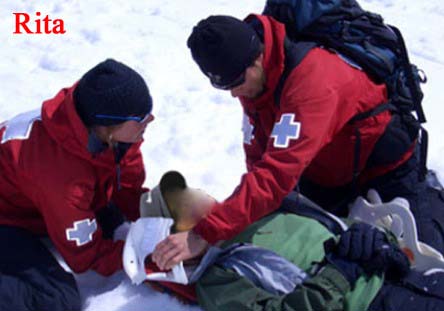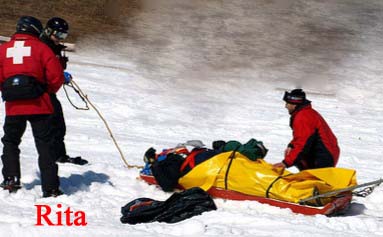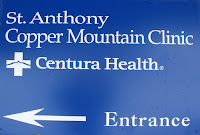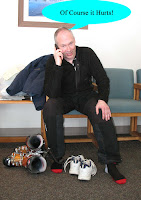I have my itinerary set for the 2011 trip everybody picked for me. From my research I have found that the eastern side of the Greek Isles offers some of the richest history and also allows me to visit the Turkish Isles. I may even extend my trip and visit the interior of Turkey. Below is the itinerary for the trip. I will be sailing on a The T.G. Ellyson a 44 foot sail boat.
Gocek . The Club Marina in Gocek is the scenic ultimate in yacht marinas. It is situated up against pined slopes of a national forest in the NW corner of the Gulf of Fethiye twenty-five minutes by road from Dalaman International Airport.
Tomb Bay (1st night). An easy six mile sail from Gocek, on the wind, Tomb Bay is the idyllic site of ancient Crya, a Carian and Lycian city-state the citizens of which are believed to have been bi-lingual and the ruins of which date from the 5th century BC. Among numerous tombs are the remains of a Roman-Byzantine baths once fed by a nearby spring, while the Carian acropolis immediately above is distinguished by both outer and inner walls of mixed ashlar and polygonal masonry. Positioned around the bay's startling and inviting blue sea are two 4th century BC Ionic temple tombs, three house tombs, numerous pigeon-hole tombs, and a free-standing vaulted tomb. Lycians are believed to have been Cretans driven from Crete by Minos of Knossos. Carians are thought to have been native to Asia Minor.
Ekincik (2nd night). Twenty-seven miles from Tomb Bay, on the wind, Ekincik is like, well, a mountain lake plopped down with its own pine trees against the red buttes of Sedona, Arizona. And does it have a restaurant! Perhaps Turkey's best comprehensive menu. River boat piloted by our friend Aladdin to ancient Caunos. You can read about Caunos in Herodotus's History, a city-state and maritime power. Dramatic rock tombs further up river near Dalyan and its fresh-water lake.
Kumlu Buku (3rd night). Ancient Amos fifteen miles on and off the wind west of Ekincik. Ruins a short climb above the beach, including an early Hellenistic theater with a hill-top view of Marmaris Bay. Behind the beach below is an extravagant example of modern bank-insider excess. At the other end of the beach is a restaurant featuring superb Beijing cuisine and unsurpassed ice cream crepes.
Loryma (4th night). A Rhodian outpost twenty miles off and on the wind from Kumlu Buku, the fortress here dates from the third century BC while the two acropolei are Chersonese and centuries older. The anchorage during the fourth century harbored the Persian fleet of Conon the Athenian while it prepared to end Sparta's sea supremacy in a battle fought nearby. The seafood at Kucuk Mustafa's can be surprisingly good, while one of the statue bases in his back yard may well have supported a bronze Conon. Meanwhile the swimming and kayaking (the TGE carries two kayaks, a single and a twin) in clear water over a sand bottom doesn't get much better.
Datca (5th night). Nineteen miles on and off the wind from Loryma, Datca was Knidos before Knidos moved to the Triopian cliffs about 365 years before the Christian era. As Knidos the city was famous for its school of medicine, and many Knidian medical analyses have come down to us as parts of the Hippocratic Collection. Later, as Stadia (whence Datca), the city flourished as an agricultural center. Now it's a resort town where rug merchants are somewhat reasonable if still cunning. The Kebapca above the harbor has a fine ambience, a wonderful view, and good kebaps. Port of Exit.
Simi (6th night). Having put into 248 Greek islands, this one, seven miles off the wind from Datca, is among the more striking. Simi Town has a special charm with neo-classical homes of long-gone sea captains climbing steep harbor slopes. From the heights above Simi Town see the straits in which the Spartan fleet in 411 BC trapped the Athenian fleet, beginning a six-year decline in Athenian maritime dominance culminating in final defeat at Aegospotami. See as well remains of the tropaion (monument) erected to celebrate the local victory. The best taverna dining in Simi may be had at Meraklis one block south of the harbor, while the seafood at Taverna Manos fronting the harbor is popular at upscale prices. Port of Entry.
Ova Buku (7th night). Fifteen off-the-wind miles from Simi Town, Ova Buku is a sleepy resort beneath steep slopes close by ancient Triopium. The latter is situated within fortified Archaic-period settlement walls with bastion above the village of Kumyer, the walls still standing to a height of 25-feet. If visiting, take a rope with which to rappel into the largest cistern where amphorae lie about. Also take a metal detector to locate hoarded coins. In Ova Buku the principal attractions are beaches fronting Ogun's Place, while at Ogun's Place the camaraderie is welcoming and the fare superior.
Knidos (8th day). Sounds Greek but is Turkish, a clear-water cove at the tip of the Doric Peninsula twelve miles off and on the wind from Ova Buku. Triopian cliffs seasonally flush in rosemary and myrtle. Theater and stoa at the water's edge. Temple of Aphrodite once housing Praxitele's first nude. Great swimming, kayaking, and snorkeling over underwater ruins. A must visit.
Pali, Nisiros (8th night). A motor-bike island ten sailing miles west of Knidos, Nisiros is a volcanic cousin to the more-visited Santorini, last erupting 25 thousand years ago. Its verdant exterior and quaint rim-villages mask a crater floor nevertheless still bubbling in places. Thick-soled shoes are recommended, as is a visit to the ancient city said by some to have the finest Classical Period walls in all of Greece. Wonderful dining at Christina's Taverna Afrodite.
Kos Town, Kos (9th night). One hour by air from Athens and eleven miles by fast ferry to Bodrum, Kos is one of the green Dodecanese islands, its beaches and inland treks popular with travelers since Cleopatra. It is also the birthplace of Hippocrates, and is remarkable both for its beaches and for its evidence of history. Among the latter is the medieval fortress built in AD 1470 by the Knights of Saint John of Jerusalem in part from Hellenistic blocks purloined from the Asklepeion school of medicine founded in 357 BCE in memory of Hippocrates. Both are worth a visit. Fine dining on the beach at Taverna Spitaki immediately east of Kos Island Marina.
Should be a great Trip.
Cheers,
DUG
Please vote on where I should go in 2012 (Poll in on the left)
Gocek . The Club Marina in Gocek is the scenic ultimate in yacht marinas. It is situated up against pined slopes of a national forest in the NW corner of the Gulf of Fethiye twenty-five minutes by road from Dalaman International Airport.
Tomb Bay (1st night). An easy six mile sail from Gocek, on the wind, Tomb Bay is the idyllic site of ancient Crya, a Carian and Lycian city-state the citizens of which are believed to have been bi-lingual and the ruins of which date from the 5th century BC. Among numerous tombs are the remains of a Roman-Byzantine baths once fed by a nearby spring, while the Carian acropolis immediately above is distinguished by both outer and inner walls of mixed ashlar and polygonal masonry. Positioned around the bay's startling and inviting blue sea are two 4th century BC Ionic temple tombs, three house tombs, numerous pigeon-hole tombs, and a free-standing vaulted tomb. Lycians are believed to have been Cretans driven from Crete by Minos of Knossos. Carians are thought to have been native to Asia Minor.
Ekincik (2nd night). Twenty-seven miles from Tomb Bay, on the wind, Ekincik is like, well, a mountain lake plopped down with its own pine trees against the red buttes of Sedona, Arizona. And does it have a restaurant! Perhaps Turkey's best comprehensive menu. River boat piloted by our friend Aladdin to ancient Caunos. You can read about Caunos in Herodotus's History, a city-state and maritime power. Dramatic rock tombs further up river near Dalyan and its fresh-water lake.
Kumlu Buku (3rd night). Ancient Amos fifteen miles on and off the wind west of Ekincik. Ruins a short climb above the beach, including an early Hellenistic theater with a hill-top view of Marmaris Bay. Behind the beach below is an extravagant example of modern bank-insider excess. At the other end of the beach is a restaurant featuring superb Beijing cuisine and unsurpassed ice cream crepes.
Loryma (4th night). A Rhodian outpost twenty miles off and on the wind from Kumlu Buku, the fortress here dates from the third century BC while the two acropolei are Chersonese and centuries older. The anchorage during the fourth century harbored the Persian fleet of Conon the Athenian while it prepared to end Sparta's sea supremacy in a battle fought nearby. The seafood at Kucuk Mustafa's can be surprisingly good, while one of the statue bases in his back yard may well have supported a bronze Conon. Meanwhile the swimming and kayaking (the TGE carries two kayaks, a single and a twin) in clear water over a sand bottom doesn't get much better.
Datca (5th night). Nineteen miles on and off the wind from Loryma, Datca was Knidos before Knidos moved to the Triopian cliffs about 365 years before the Christian era. As Knidos the city was famous for its school of medicine, and many Knidian medical analyses have come down to us as parts of the Hippocratic Collection. Later, as Stadia (whence Datca), the city flourished as an agricultural center. Now it's a resort town where rug merchants are somewhat reasonable if still cunning. The Kebapca above the harbor has a fine ambience, a wonderful view, and good kebaps. Port of Exit.
Simi (6th night). Having put into 248 Greek islands, this one, seven miles off the wind from Datca, is among the more striking. Simi Town has a special charm with neo-classical homes of long-gone sea captains climbing steep harbor slopes. From the heights above Simi Town see the straits in which the Spartan fleet in 411 BC trapped the Athenian fleet, beginning a six-year decline in Athenian maritime dominance culminating in final defeat at Aegospotami. See as well remains of the tropaion (monument) erected to celebrate the local victory. The best taverna dining in Simi may be had at Meraklis one block south of the harbor, while the seafood at Taverna Manos fronting the harbor is popular at upscale prices. Port of Entry.
Ova Buku (7th night). Fifteen off-the-wind miles from Simi Town, Ova Buku is a sleepy resort beneath steep slopes close by ancient Triopium. The latter is situated within fortified Archaic-period settlement walls with bastion above the village of Kumyer, the walls still standing to a height of 25-feet. If visiting, take a rope with which to rappel into the largest cistern where amphorae lie about. Also take a metal detector to locate hoarded coins. In Ova Buku the principal attractions are beaches fronting Ogun's Place, while at Ogun's Place the camaraderie is welcoming and the fare superior.
Knidos (8th day). Sounds Greek but is Turkish, a clear-water cove at the tip of the Doric Peninsula twelve miles off and on the wind from Ova Buku. Triopian cliffs seasonally flush in rosemary and myrtle. Theater and stoa at the water's edge. Temple of Aphrodite once housing Praxitele's first nude. Great swimming, kayaking, and snorkeling over underwater ruins. A must visit.
Pali, Nisiros (8th night). A motor-bike island ten sailing miles west of Knidos, Nisiros is a volcanic cousin to the more-visited Santorini, last erupting 25 thousand years ago. Its verdant exterior and quaint rim-villages mask a crater floor nevertheless still bubbling in places. Thick-soled shoes are recommended, as is a visit to the ancient city said by some to have the finest Classical Period walls in all of Greece. Wonderful dining at Christina's Taverna Afrodite.
Kos Town, Kos (9th night). One hour by air from Athens and eleven miles by fast ferry to Bodrum, Kos is one of the green Dodecanese islands, its beaches and inland treks popular with travelers since Cleopatra. It is also the birthplace of Hippocrates, and is remarkable both for its beaches and for its evidence of history. Among the latter is the medieval fortress built in AD 1470 by the Knights of Saint John of Jerusalem in part from Hellenistic blocks purloined from the Asklepeion school of medicine founded in 357 BCE in memory of Hippocrates. Both are worth a visit. Fine dining on the beach at Taverna Spitaki immediately east of Kos Island Marina.
Should be a great Trip.
Cheers,
DUG














